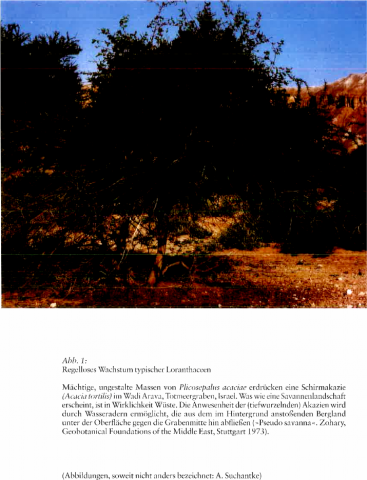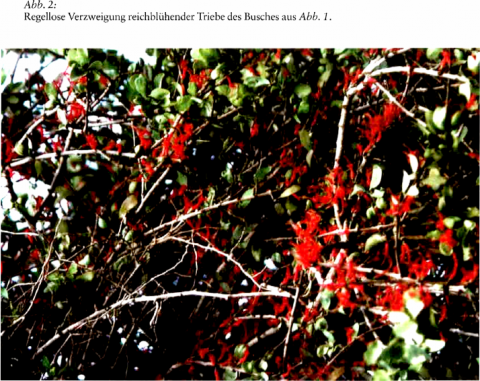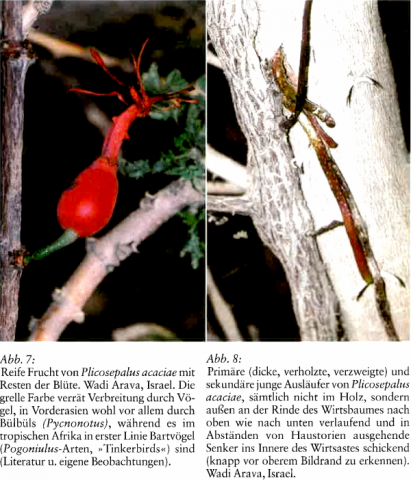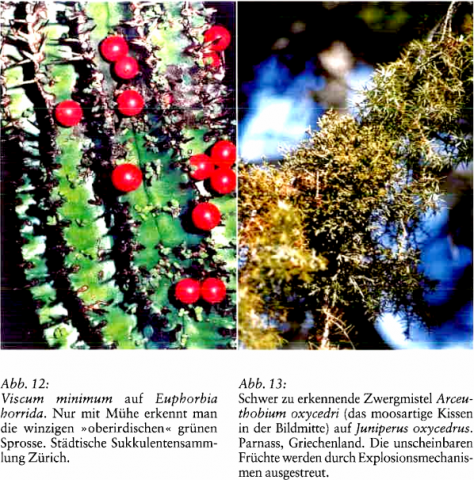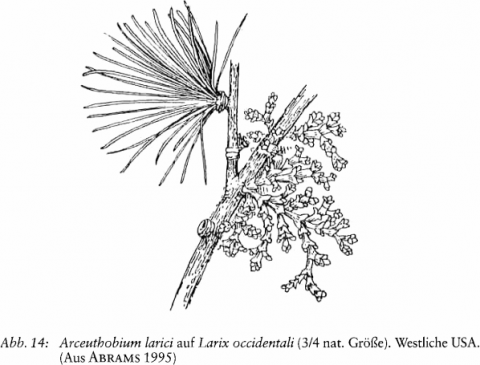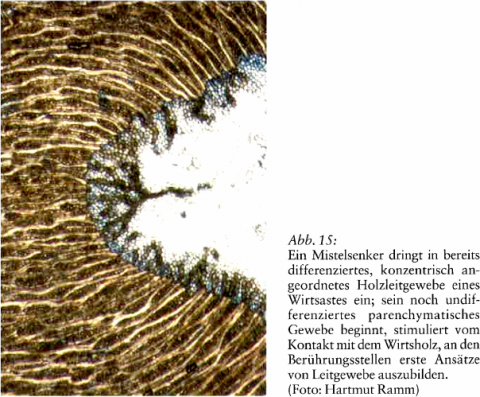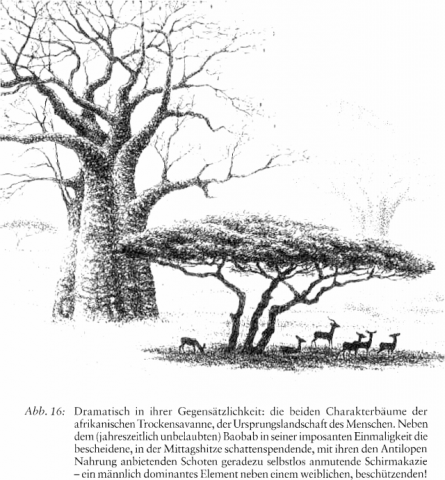Die Mistel und das Geheimnis ihrer Heilkraft
In memoriam Thomas Göbel
Export Article Citation as
- Download price : €6
Abstract:
Mistletoe and the secret of its healing power
A practical method for finding the specific in a phenornenon is to look for antagonistic or polar manifestations of it. There are some immediately strik« ing antagonisms in the case of the two closely related families Viscaceae and Loranthaceae : 1. Loranthaceae tend to have lush and largcly disorderly growth, mainly through extra-cortical runners in all directions, lush foliage and highly specialised, conspicuously coloured flowers adapted for bird pollination. 2. The evolutionary trend of the Viscaceae stands in stark contrast to this, especially the genus Viscum. It stops its organ formation at early ontogenetic stages (no differentiation of the leaf into a physiologically upper and lower surface) and at germination soon ceases its phototropic and geotropic orientations which are initially still present. This condition is unique for higher plants and best compares with the weightless condition of the embryo in amniotic fluid. The tendency to reduction increases within the Viscaceae in the genus Viscum, in the case of V. minimum, and above all with Arceuthobium species (dwarf mistletoe). Both form only rudimentary ‚above ground‘ organs and their vegetative parts literally creep away into the host plants. The Loranthaceae present the opposite picture: intense interaction With the host tree can give rise to the formation of tumorous woody growths (burrs) as defensive reactions. Even more strongly than the vegetative luxuriance, the extremely antagonistic character of this plant that directly contrasts With Viscum is emphasised by the remarkable similarity in form of the leaves of various Australian Loranthaceae to the foliage of the respective host plants that they parasitise. This conformity is the result of the parasite taking advantage of and consuming the formative forces of the tree to develop its own form! Through this, the contrast with Viscum album becomes especially striking: its ‚embryonic‘ character means that the formative forces of the tree are indeed taken over, but instead of their being appropriated by the mistletoe for developing its own form they are stored within it. It is these iinused formative forces from the tree on which the mistletoe grows that are then available for cancer therapy! The question of why we do not use the substances of the tree itself is superfluous. In the tree, its own formative forces are already tied to its species-specific substance formation. They can only be kept and preserved in their full potency in their ,virgin‘ state, by Viscum album.
References
- ABRAMS, L. (1995): Illustrated Flora of the Pacific States, Vol. I. Stanford
- BARLOW, B. A. (1981): The lorathaceous mistletoes in Australia. In: Keast, A. (Ed.), Ecological Biogeography of Australia, Vol. 1, pp. 555-574. The Hague, Boston, London
- BARLOW, B. A., WIENS, D. (1977): Host-parasite resemblance in Australian mistletoes: the case for cryptic mimicry. Evolution 31: 69-84
- DORKA, R. (2006): Die endogenen Wachstumsbewegungen der Weißbeerigen Mistel (Viscum album L.), ihre Gestaltentwicklung und Meristemdifferenzierung zu vegetativen und generativen Primordien. Wiss. Schriftenreihe d. Inst. f. Evolutionsbiologie und Morphologie, Univ. Witten-Herdecke
- GÖBEL, T., DORKA, R. (1986): Zur Raumesgestalt und zur Zeitgestalt der Weißbeerigen Mistel (Viscum album L.). In: Tycho de Brahe-Jahrbuch für Goetheanismus 1986: 167-194
- HEGI, G. (o. J.): Illustrierte Flora von Mitteleuropa, 1. Aufl. München
- KIENLE, G. S., KIENE, H . (2003): Die Mistel in der Onkologie. Stuttgart, New York
- MANDERA, R. (2005): Die Mistel als Heilpflanze der Tumorkrankheit in der Anthroposophischen Medizin. Iscucin Kompendium, 1. Aufl., WALA Bad Boll/Eckwälden
- POLHILL, R., WIENS, D. (1998): Mistletoes of Africa. The Royal Botanic Gardens Kew
- PORTMANN‚ A. (1976): Einführung in die vergleichende Morphologie der Wirbeltiere, 5 .Aufl. Basel
- RICHTER, A., POPP, M. (1992): The physiological impoftance of accumulation of cyclitols in Viscum album. New Phytologist 121: 431-438
- STEINER, R. (1904-1908): Aus der Akasha-Chronik (GA 11), Kapitel: Austritt des Mondes. 3.Aufl. Dornach 1964
- STEINER, R. (1905): Grundelemente der Esoterik (GA 93A), 24. Vortr. 26.10.1905
- STEINER, R. (1907): Die Theosophie des Rosenkreuzers (GA 99), 10. Vortr. Dornach 1955
- STEINER, R. (1919): Erziehungskunst - Seminarbesprechungen und Lehrplanvorträge: 10. Seminarbesprechung (GA 295 ). Dornach 1969
- STEINER, R. (1920): Geisteswissenschaft und Medizin (GA 312), 13. Vortr. 2.4.1920. Dornach 1976
- STEINER, R. (1923): Erdenwissen und Himmelserkenntnis (GA 221). Vortr. 11.2.1923: »Der unsichtbare Mensch in uns. Das der Therapie zugrunde liegende Pathologische « . Dornach
- URECH, K. (2001/2): Giftprozesse der Mistel - eine Polarität. Mistilteinn - Beiträge zur Mistelforschung: 44-56

